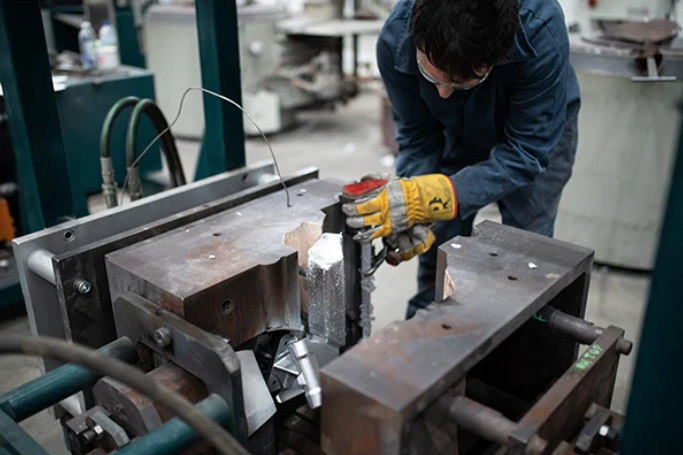Producing Oversized Molding Parts: Enhancing Efficiency and Precision
Introduction:
In the manufacturing industry, producing oversized molding parts requires a careful balance between efficiency and precision. Oversized molding parts are those that exceed the typical size limits of standard injection molding processes. These parts are often used in various industries such as automotive, aerospace, and construction. This article will discuss the importance of enhancing efficiency and precision in the production of oversized molding parts and explore the strategies and technologies that can be utilized to achieve this goal.
Efficiency in Production:
Efficiency plays a crucial role in the manufacturing process of oversized molding parts. It ensures that the production cycle is streamlined, resources are optimized, and costs are minimized. There are several key factors to consider to enhance efficiency:
1. Mold Design and Construction: The design and construction of the mold used for manufacturing oversized molding parts should be carefully planned to maximize efficiency. By optimizing the mold design, manufacturers can reduce cycle times, minimize material waste, and enhance overall productivity.
2. Automated Machinery: Utilizing automated machinery and robotics can significantly improve the efficiency of producing oversized molding parts. Automated systems can operate continuously, reducing manual labor and increasing production speed. This technology also reduces the risk of human error, ensuring consistent and precise part production.
3. Lean Manufacturing Principles: Implementing lean manufacturing principles, such as just-in-time production, can further enhance efficiency. By minimizing inventory and reducing unnecessary downtime, manufacturers can optimize the production process and improve overall productivity.
Precision in Production:
Producing oversized molding parts with precision is essential to meet the stringent quality requirements of various industries. Precision ensures that the finished parts are accurate, reliable, and fit seamlessly into the intended application. Here are some strategies to achieve precision:
1. Advanced Mold Flow Analysis: Before commencing production, it is crucial to conduct mold flow analysis to simulate the behavior of the molten material inside the mold. This analysis helps identify potential defects, such as air traps or short shots, and allows manufacturers to optimize the mold design to improve part quality and precision.
2. High-Quality Materials: Using high-quality materials for manufacturing oversized molding parts is essential to achieve precision. The material properties directly impact the dimensional stability and strength of the finished parts. Manufacturers should carefully select materials that meet the required specifications and have the necessary properties to ensure precision.
3. Quality Control Measures: Implementing robust quality control measures throughout the production process is vital to maintaining precision. Regular inspections and testing should be conducted to ensure that the oversized molding parts meet the required dimensional tolerances and functional specifications. This can involve using advanced metrology equipment, such as coordinate measuring machines (CMM), to verify part dimensions accurately.

Cutting-Edge Technologies:
To enhance efficiency and precision in producing oversized molding parts, manufacturers can leverage cutting-edge technologies. These advancements enable improved production capabilities and offer new possibilities in manufacturing. Some notable technologies include:
1. 3D Printing/Additive Manufacturing: Additive manufacturing techniques, like 3D printing, can be used to produce prototypes and tooling for oversized molding parts. This technology allows for rapid iteration, reduced lead times, and customization options, enhancing both efficiency and precision.
2. Simulation Software: Advanced simulation software can simulate the molding process, allowing manufacturers to identify potential issues in real-time and optimize the process parameters for improved efficiency and precision.
3. Intelligent Sensors and Internet of Things (IoT): Installing intelligent sensors in molding machines can provide real-time data on the production process. This data, combined with IoT connectivity, enables manufacturers to monitor and optimize production remotely, leading to enhanced efficiency and precision.
Conclusion:
Producing oversized molding parts with enhanced efficiency and precision is crucial in today’s manufacturing industry. By prioritizing factors such as mold design, automated machinery, lean manufacturing principles, advanced mold flow analysis, high-quality materials, and robust quality control measures, manufacturers can optimize their production processes. Additionally, leveraging cutting-edge technologies, such as 3D printing, simulation software, and intelligent sensors, offers new possibilities for improving efficiency and precision. By continuously striving for improvements in these areas, manufacturers can meet the demands of the market and deliver high-quality oversized molding parts.
-
Design and Production of High-Quality Plastic Chair Mould
2023-9-21
Introduction: The design and production of high-quality plastic chair molds play a crucial role in the manufacturing ind...
عرض التفاصيل -
Manufacturing a High-Quality Plastic Middle Chair Mould
2023-12-5
Plastic chairs have become a popular choice for many households and commercial spaces due to their versatility, affordab...
عرض التفاصيل -
Creating High-Quality Plastic Injection Crate Molds for Efficient Storage Solutions
2024-1-3
Plastic injection crate molds are essential in the production of durable and efficient storage solutions. They play a cr...
عرض التفاصيل -
Achieving Precision and Performance: Aerospace Molding Parts
2023-8-6
In the aerospace industry, precision and performance are of utmost importance. The success of any aircraft or spacecraft...
عرض التفاصيل -
Manufacturing Components for Industrial Molding
2023-6-2
The manufacturing of components for industrial molding is an intricate process that involves various steps and technique...
عرض التفاصيل -
Crafting Excellence: Creating an Industrial Trash Bin Mold
2023-12-23
The industrial landscape demands efficiency and sustainability, and one often-overlooked aspect contributing to this is ...
عرض التفاصيل







